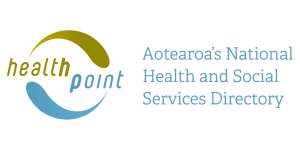Oestrogen patches for menopausal hormonal treatment
Key points about oestrogen patches
- Oestrogen skin patches are used for menopausal hormone therapy (MHT) to ease symptoms when they are interfering with your daily life.
- Examples of oestrogen patches include Estradiol (Sandoz® and Mylan/Viatris®), Estradot®, Estraderm MX® and Lyllana Estradiol®.
- Find out where to apply them and possible side effects.
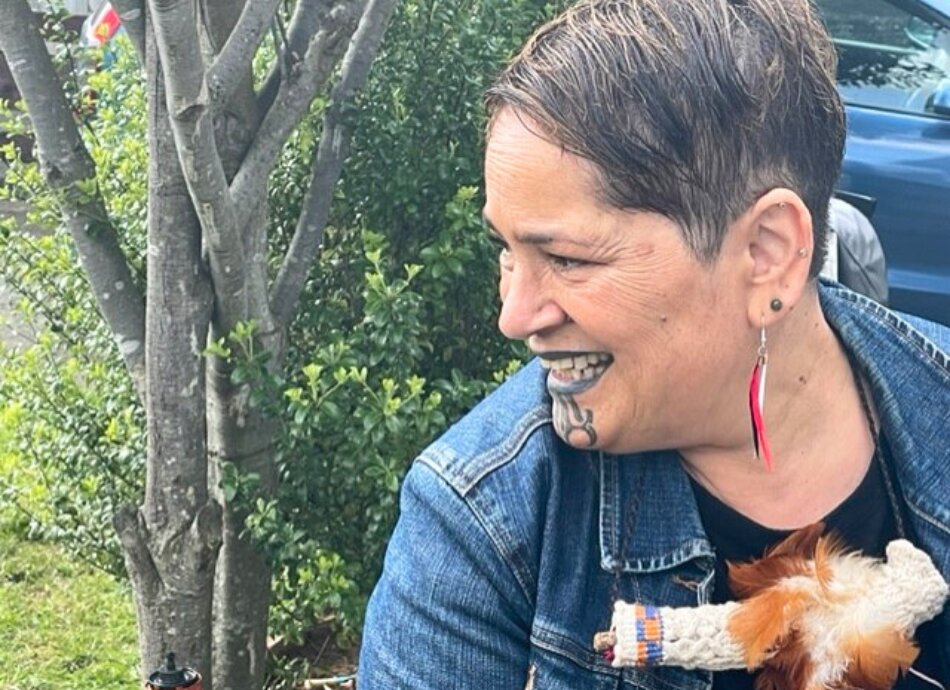
Oestrogen patches are applied to the skin and slowly release the hormone oestradiol. The hormone from the patch is absorbed through your skin and into your body.
- Oestrogen patches are used as menopausal hormone therapy (MHT) to ease symptoms when they are interfering with your daily life. Read more about menopause.
- It may be used for people who have early (premature) menopause for example after treatment for cancer. Read more about early menopause.
- For osteoporosis prevention in people who are post-menopausal and who are at a high risk of fractures and unable to take other types of medicines for osteoporosis. Read more about osteoporosis.
- For the treatment of premenstrual dysphoric disorder (PMDD) an extreme and distressing type of premenstrual syndrome that seriously affects women’s mental health and general wellbeing.
Oestrogen patches come in different brands and strengths
In Aotearoa New Zealand examples of oestrogen patches include Estradiol (Sandoz® and Mylan/Viatris®), Estradot®, Estraderm MX® and Lyllana®. Oestrogen patches are available in different strengths. Your healthcare provider will advise you on the best dose for you. They are usually applied twice a week, every 3 or 4 days.
Pros and cons of oestrogen patches
- Pros: Oestrogen patches are convenient because they only need to be applied twice a week and you don't have to remember to take a tablet every day. The risk of some side effects, such as blood clots, is lower with patches than with oestrogen tablets.
- Cons: The patch works well for many people, but it may not be a suitable option if you swim frequently, sweat profusely, or soak in hot tubs and baths. Also, the patch itself might irritate the skin where you apply it.
Oestrogen patches are used as menopausal hormone therapy (MHT) to replace oestrogen. At menopause, and during the time leading up to it (peri-menopause), your ovaries start to make less oestrogen but in perimenopause the amount produced can fluctuate a lot. These changing and declining oestrogen levels can cause symptoms such as hot flushes, vaginal dryness, and mood and sleep changes.
Using hormone therapy to replace oestrogen can help to relieve some of the symptoms of menopause and can make a big difference to some people's enjoyment of life. Read more about the types and stages of menopause and the signs of menopause.
If you have a uterus
It’s important that you use both oestrogen and progestogen for your MHT.
- Using oestrogen patches alone can overstimulate the cells lining your uterus, causing an increased risk of cancer of the uterus lining. So if you have a uterus you will need to take progestogen together with oestrogen to reduce the risk.
- Progestogen helps to prevent the thickening of the lining and therefore reduces the risk of cancer.
- Progestogen is an artificial form of progesterone, which occurs naturally in the body. The preferred progestogen is Utrogestan because it's considered a body identical hormone therapy. It has the same chemical structure as the natural female hormone progesterone. Evidence suggests that this formulation has fewer long-term side effects.
If you’ve had a hysterectomy (your uterus has been removed)
You can use oestrogen alone and you don’t need progestogen, unless you've been diagnosed with endometriosis. If you have endometriosis, there may be some womb lining (endometrium) remaining hidden elsewhere in your body such as your bowel or bladder. Taking a continuous low dose of progesterone protects it from being stimulated by oestrogen.
Where to put the patch
The best place to apply oestrogen patches is on your lower abdomen (tummy/puku) or buttocks. Don't apply the patch to your breasts. Don't put the patch on your waistline where tight clothes may rub it. Avoid putting the patch on areas where the skin is hairy, irritated or inflamed (red) or folds.
Before applying the patch
Remove an old patch before applying a new patch. Make sure your skin is clean and dry. Don't apply the patch to oily, broken or irritated skin.
When applying the new patch
Press the patch firmly in place for about 10 seconds. Make sure the patch sticks well, especially around the edges. Don't put the patch on the same area of skin for the next few applications.
VIDEO: How to put on your oestrogen patch
Other tips
- Some procedures such as an MRI scan may overheat the patch and burn your skin. Talk to your healthcare provider before your procedure.
- Avoid lotions or perfumes on areas where you stick your patch as it may stop the patch from sticking properly.
- Read more about the safe use of medicine patches.
MHT is safe to use for most people if started in their 50s or for the first 10 years after the onset of menopause.
If you had an early menopause (before 45 years) you should continue treatment at least until the average age of menopause (51 years).
When assessing the risks of MHT, remember that they're not the same for everyone. Your healthcare provider will be able to discuss your individual risk with you.
- Risks vary based on how old you are, when you start MHT and how long you take it for.
- Short-term use in early menopause has fewer risks than when it's started later in menopause.
- Risks generally increase as you get older.
MHT and cancer risk
Women are often concerned about the risk of cancer when using MHT. If you're concerned, talk to your healthcare provider about your situation.
Here is some guidance.
- Breast cancer: Fear of breast cancer is a major reason why women don't use MHT. Postmenopausal women are more likely to die from heart disease or stroke than breast cancer. Overall 1 in 8 women will develop breast cancer during their lifetime. Studies suggest there's either no increase, or a very small increased risk of breast cancer when using oestrogen-only MHT. Breast cancer risk is lower with oestrogen-only MHT compared with oestrogen plus progestogen. The risk increases the longer you take MHT and decreases after stopping it. Some types of progestogens such as Utrogestan have lower risk. Read more about breast cancer risk(external link).
- Endometrial cancer: Oestrogen-only MHT increases the risk if you have a uterus, because oestrogen stimulates the endometrial lining. That’s why progestogen is added to protect your uterus. Combined MHT (oestrogen + progestogen) protects against endometrial cancer, when used continuously.
- Ovarian cancer: There is a very low risk that MHT increases the risk of ovarian cancer. The absolute risk of ovarian cancer associated with MHT use is low, with about 1 additional case per 1,000 women using MHT for 5 years.
MHT after treatment for cancer
Women often have concerns about starting MHT after having cancer treatment. Your suitability to start MHT depends on the type of tumour you have.
- Cervical, vaginal and vulval cancers: Using MHT is generally suitable if you’ve had these cancers, as they're not considered hormone responsive cancers. This means these types of cancers don't rely on hormones (such as oestrogen or progesterone) to grow or spread.
- Endometrial cancer: MHT is reasonable for those who have had surgery (removal of uterus and both ovaries) for low-risk endometrial cancer to use oestrogen replacement, with either the patch, gel or tablets. Progesterone is rarely required – your gynaecologist will advise you. Note: You will not need progestogen because your uterus has been removed.
- Ovarian cancer: MHT treatment depends on whether you have had surgery to remove your uterus. In some types of ovarian cancers, MHT can be considered after weighing up the risk and benefits. It's important you discuss this with your gynaecology oncologist before starting MHT
- Breast cancer: For women who have had hormone receptor-positive breast cancer, MHT is not usually recommended. Non-hormonal treatments are preferred.
Timing: If you have recently had surgery, the best time to commence MHT is anytime 6 weeks after surgery.
Every person is different and the length of time you'll have menopausal symptoms is unknown.
- If you had an early menopause (before 45 years) you should continue treatment at least until the average age of menopause (51 years).
- It’s important to have regular check-ups with your doctor to assess whether ongoing oestrogen is right for you.
- Most people stop taking it after a few years, when their symptoms resolve. It's usually best to reduce menopausal hormone therapy gradually rather than stopping it suddenly. This may reduce the risk of menopause symptoms returning.
- Current research suggests that oestrogen can be taken long term and there is no recommended ‘stop’ time, however after five years of MHT or after your mid 50’s, the pros and cons of MHT should be discussed with your healthcare provider.
Common side effects
Some people may have headaches, breast tenderness or pain, feel sick (nausea), experience mood changes and weight changes. If these things happen to you, contact your doctor for advice.
Serious side effects
Serious side effects from oestrogen patches are rare.
Get immediate medical advice if you get these symptoms:
- Pain, redness or swelling in one of your legs, usually in your calf. This could be a sign of deep vein thrombosis (DVT).
- Tummy pain, your skin and eyes turning a yellow colour, itchy skin, dark coloured pee, pale coloured poo. These could be signs of problems with your liver.
- A sudden rash or signs of anaphylaxis, such as swelling of your face or lips.
Tell your healthcare provider if you get the following symptoms:
- A lump or changes in your breasts, especially dimpling of the skin, changes in the nipple or any lumps you can see or feel.
- Any changes in vaginal bleeding after you have been taking oestrogen for more than a few months.
The following links have more information on MHT. Be aware that websites from other countries may contain information that differs from New Zealand recommendations.
Menopause (external link)Sexual Wellbeing Aotearoa
Menopause health information(external link) Australasian Menopause Society
Menopause and HRT(external link) Patient Info, UK
Brochures
Medicines and side effects(external link) Healthify He Puna Waiora, NZ, 2024
Supply issue(external link) Pharmac, NZ, 2025
5 questions to ask about your medications(external link) Health Quality and Safety Commission, NZ, 2019 English(external link), te reo Māori(external link)
References
- Oestrogen only menopausal hormone therapy(external link) Australasian Menopause Society, 2017
- Estrogens and management of menopausal symptoms(external link) New Zealand Formulary, 2024
- Can transdermal patches be halved?(external link) Christchurch Medicines Information Service, NZ, 2023
Brochures
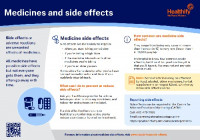
Medicines and side effects
Healthify He Puna Waiora, NZ, 2024
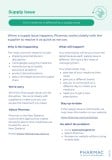
Supply issue
Pharmac, NZ, 2025
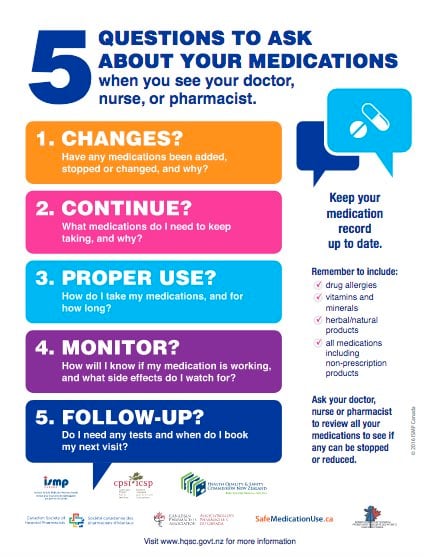
Health Quality and Safety Commission, NZ, 2019 English, te reo Māori
Credits: Healthify editorial team. Healthify is brought to you by Health Navigator Charitable Trust.
Reviewed by: Angela Lambie, Pharmacist, Auckland.
Last reviewed:




